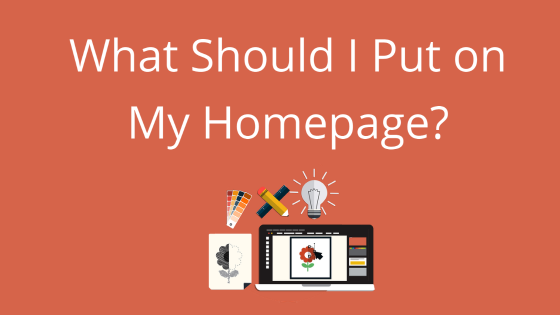Blogs are a place where you can share ideas, opinions, and general information about a topic. Even if blogging is not the main goal of your site, there are a number of reasons why you might want to include a blog. Some common reasons include:
- SEO benefits
- Establishing your expertise
- Sharing your ideas
- Generating passive income
We’ll be walking you through how to create your own blog page in this article. However, keep in mind that this guide is for the main blog page where people go to see the latest blog posts, not the individual blog content pages.
What’s the Point of a Blog Page?
Main blog pages are designed to make your content look enticing. You want visitors to click through and read your content. Otherwise, what’s the point of writing the content in the first place? So one of the main blog page’s first goals is to make your posts appealing. If your main blog page is cluttered and overwhelming, people will bounce off without reading your content.
If that happens, your main blog page isn’t fulfilling its purpose. Main blog pages should usher people into your content. That way, they can read about your ideas, see your expertise, or generate that passive income for you.
So cultivating your blog can definitely help your business. If you’re just getting started, though, you may be wondering how exactly you should build your main blog page. We’ll cover some of the basics to help you get started.
Blog Page: Defining Characteristics
When building a main blog page, there are a few things to keep in mind. By considering these things, you’ll give yourself a head start on creating a successful main blog page.
Keep Things Clear
First things first: make sure you make things clear. Your main blog page should be designed in a way that clearly showcases your blog posts. It’s easy to get wrapped up in the fun and fancy features that you can add to your main blog page design. However, it’s important to remember that while these things can be helpful and engaging, your main blog page can’t achieve its goal if it’s confusing.
On the other hand, it’s important to invest time into design choices that make it easy for the visitor. If clarity isn’t prioritized, visitors may feel lost or confused by your main blog page. Can they click this? How did they end up on this page? Your goal is to keep them from asking questions like this. Confusion and frustration will quickly cause visitors to leave your site, which works against the entire reason you have a blog in the first place. This is where design plays a role. You can use your page’s design to create the perfect environment for engagement.
Because every site is different, we can’t tell you the exact methods you should use to keep your site simple. However, these tips are a great place to start:
- Make it obvious what can be clicked and what can’t be.
- Ensure that you’re not giving too much information. Get your point across, but save the actual content for your posts.
- Prioritize clarity over fun features.
- Clearly separate your posts so visitors can tell each one is a different piece of content.
So prioritize design that brings clarity to your blog. Make sure clickable things look clickable. Make sure your titles are easy to read and properly spaced out. Keep featured images from being overwhelming. It’s details like these that will end up making the difference.
Show Them There’s More
Another tenet of a main blog page is to ensure your visitors see that there’s more content for them to peruse. Whether that’s more categories or more blog posts, visitors should be able to see that your blog is chock full of information. You don’t need to load every single post onto the page, but make sure the page indicates that there’s more information for the visitor to explore if they desire.
Don’t worry if you’re just getting started and don’t have that many blogs posted. You don’t need to fill up all this extra space. You just need to make sure that your website has the ability. That way, as your blog grows, your main blog page can grow with you.
Consider the Visitor
It’s easy to get caught up in what our website does for us, instead of what it does for the visitor. However, if we take a moment to put ourselves in the visitor’s shoes, it can open the door to increased visitor interaction.
For starters, consider your audience. Do you have statistics you can pull from to get more information? Do you have a direct line to your audience, like through social media or chat? Use every tool at your disposal to research your audience. Once you’ve done your research, ask yourself, “What do they want?” and “How can I give that to them?”
Now take that newfound knowledge, and use it to your advantage.
For example, let’s say that you know your readers come to your site for a specific piece of information. This could be anything – a specific tutorial, a cooking recipe, or even a hot take on a polarizing topic. You know that this piece of content is really popular amongst your audience.
So you make the piece of content easy to find on your main blog page. You know your audience likes this piece of content, so you create a prominent spot that features the popular post.
It’s actions like this that can help spark engagement and pull your readers into your site. Readers who visit your main blog page might be intrigued by the content that others in your audience find compelling. So not only does it help your audience find interesting content, it puts your best, most compelling content front and center.
So think about how your main blog page can help you make the most impact and spark the most engagement.
What a Blog Page Typically Includes
Now that you have an idea of what defines a blog page, what site elements do you use to achieve these goals? We’ll cover a few here.
It’s important to keep in mind that design is subjective. So while we’ve found that these elements work well on a blog page, there may be contrasting design opinions out there. However, if you’re new to web design, these elements are a great place to start.
Titles
This might be a no-brainer, but it’s worth mentioning: include your post content’s titles on the main page. It serves as an indicator for what the content contains. Many visitors will use the title as the deciding factor whether they want to read the post or not.
When adding titles to your main blog page, it’s important to make sure the font chosen is easy to read. Fancier, but harder to read fonts could frustrate visitors.
Featured Images,
Featured images can be used in conjunction with your post titles to add more flavor to the main blog page. Normally, featured images are located with the title text and reflect the content’s topic. For example, if your content is about cooking dinners for party guests, the featured image might be of a table full of food or a dinner party.
Featured images are used to catch people’s eyes. If someone doesn’t want to read all your titles (and they likely won’t), the featured image serves to draw their attention instead. Once the attention is drawn, they may read the title, think, “Oh, this is interesting” and click through to read your content.
Sorted Blog Content
Sorted content is another common – and helpful- building block of a main blog page. Setting up a specific sorting order for your posts not only gives you power over your content, it helps get the content you want in front of your visitors.
A popular sorting order is newest first. This order puts your most recent content at the very beginning of your main blog page, while older articles are shuffled back as new content comes out. This sorting order is often used because it’s a great way to give your newest content traction.
Search Bar
Adding a search bar to your main blog page makes it easy for your visitors to find the exact content they’re looking for. While many visitors may visit your blog page to see your new content, some of your visitors may be searching for a specific piece of content.
Adding a search bar in this instance has two benefits: you make the visitor happy and you help them quickly find your content.
Building Your Website: Next Steps
While these tips are a great place to start when building your own main blog page, website design is subjective. You may choose to use all, some, or none of these recommendations. However, if you found this helpful, you may want to check out our other page building guides:
- What Should I Put on My Welcome Page?
- What Should I Put on My One-Page Podcast Site?
- What Should I Put on My About Page
Still in the planning phase? You can speed up your website building process by using a CMS. Check out our CMS offerings here:




